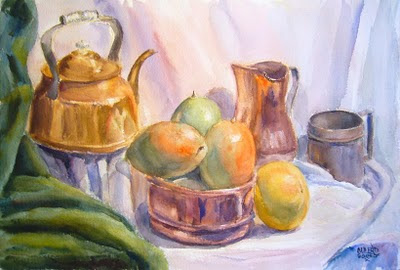
Avui, amb la Colla dels Dimecres hem anat al Parc de Montjuïc. Allà, m’ha agradat oposar dos estils arquitectònics no massa llunyans en el temps, però totalment diferents en la concepció: l’ edifici modernista de l’antiga fàbrica Casarramona, avui reconvertit en seu del Centre Cultural CaixaForum, i el pavelló d’Alemanya que l’arquitecte racionalista Mies Van der Rohe va projectar per l’Exposició Universal de 1929, i que algú va tenir la bona idea de reconstruir en el seu emplaçament original.
paper Arches 300gr, gra fí, mida 28x38 cm
Art-Nouveau & Rationalism
In our weekly exit with “La Colla dels Dimecres” we have gone today to the Montjuïc Park. There, I felt like contrasting two architectural styles not very distant in time, but completely different in its conception: the art-nouveau building of the former textile factory Casarramona, reconverted today in the Cultural Centre CaixaForum, and the German pavilion that was designed by the rationalist architect Ludwig Mies Van der Rohe for the 1929 Universal Exhibition, and which somebody had, a few years ago, the happiest idea of rebuilding in its original location.
 L'estany de Sant Maurici i Els Encantats
L'estany de Sant Maurici i Els Encantats

































































